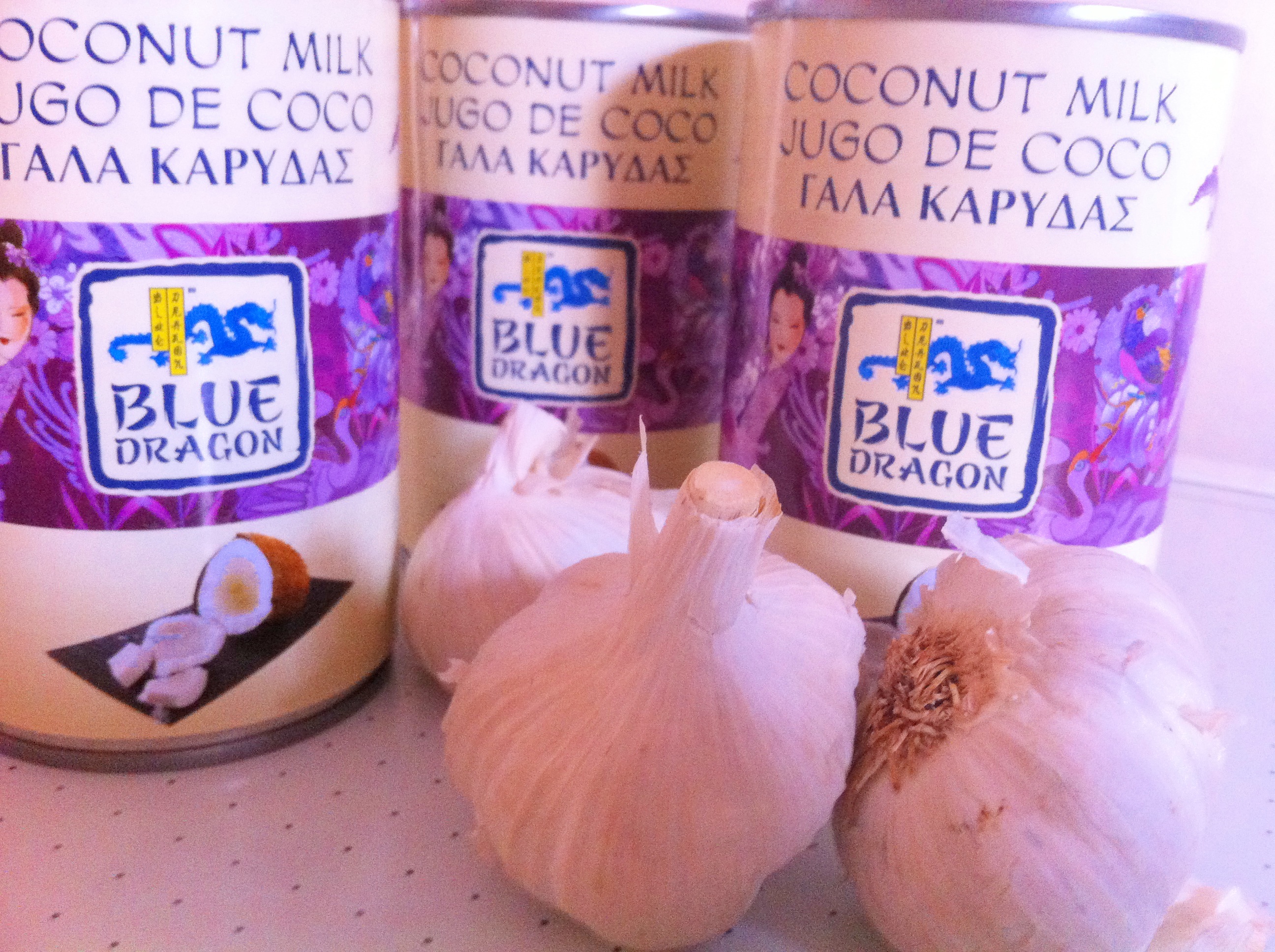So I asked her in my best Spanish “Donde se puede encontrar latas de la leche de coco, para cocinar?” Where can one find tins of coconut milk for cooking? She looked up from her shelf-stacking and sighed. She jerked her head over towards the next aisle. “Estan por allí” she said. They’re over there. “En las estanterías para …” (at this point I’d swear her lip curled slightly) … “… para comidas extranjeras.” On the shelf for, well, foreign food.
It was an aisle I hadn’t entered before. There were tins of Heinz baked beans, bottles of salad cream, and English breakfast teabags. There was Weetabix, and Marmite, and some Newcastle Brown Ale. Further along were Pot Noodles, soy sauce, jars of Rogan Josh curry sauce, and twenty tins of coconut milk. I took four.
I’d already tried all the shops in Colmenar and drawn a blank. I’d tried Mercadona in Torre del Mar with no luck. The kitchen at the Tanit restaurant showed me a tin and said it was bought locally but they didn’t know where. My last chance was Eroski at El Ingenio shopping centre between Torre del Mar and Velez-Málaga. Where I was sighed and sneered at.
Fortunately the woman at the till was much friendlier. She gasped slightly when my four tins came to almost ten euros. “Es muy caro, no?” she asked. “Si, pero es muy importante para la receta,” I replied – yes it’s expensive, but I needed it for the recipe. “Ah, no es para beber?” she asked, isn’t it for drinking? “No, es para cocinar. Es para un curry, pero un curry de Tailandia, no de la India. Es un sabor muy fresco, muy ligero – delicioso!” A light, fresh taste, for cooking Thai curry. She quizzed me on the recipe and promised to try it.
So why did the first woman sneer at my question? I have no doubt my accent was rubbish but I did ask in Spanish. And I wasn’t asking for something which has a perfectly acceptable Spanish equivalent. Ah well, maybe she was having a bad day, or had been asked too many times for the English section, who knows? A notable encounter only because it was so rare.
 Back at home three cans went on the shelf and one into the pot. Prawns fried in garlic, then fresh tomatoes and a big dollop of Thai green curry paste, add some spinach then the coconut milk. Cook up the rice, serve, and graciously accept the compliments (and from a chef, no less!). A recipe for success.
Back at home three cans went on the shelf and one into the pot. Prawns fried in garlic, then fresh tomatoes and a big dollop of Thai green curry paste, add some spinach then the coconut milk. Cook up the rice, serve, and graciously accept the compliments (and from a chef, no less!). A recipe for success.
© Tamara Essex 2014
THIS WEEK’S LANGUAGE POINT:
Oh we are struggling. Some of us to the point of refusing ever to use the subjunctive! But we had a breakthrough this week. We’re still trying to make hypotheses, and we struggle with the degrees of uncertainty that trigger the subjunctive rather than the indicative. Juanmi has done his best, jumping from the left (definitely yes) to the right (definitely no) and then hovering in the middle, the uncertain area, where the subjunctive is used.
The problem has been that our text book says that we use “Probablemente …” with the indicative, but “Es probable que ….” with the subjunctive. Whereas to us the degree of uncertainty seems the same. But this morning a lightbulb came on (or went off – our language is confusing too!). The “que” of course triggers the subjunctive. OK, but why does “Posiblemente …” use the indicative? It generally implies a fair degree of doubt. It’s all in the tone, says Juanmi.
But then he looked sheepish and went to get another textbook. The truth finally emerged. Our textbook lists a hard and fast rule that after “Posiblemente …” you use the indicative. But this OTHER textbook says you can use the indicative OR the subjunctive after “posiblemente”!!! So it depends on our own perception of the degree of doubt, rather than being a hard and fast rule! Phew. Suddenly it all seemed a bit more manageable. A bit more possible. Por lo menos, posiblemente.
“Posiblemente, vaya a usar el subjuntivo ésta semana.”